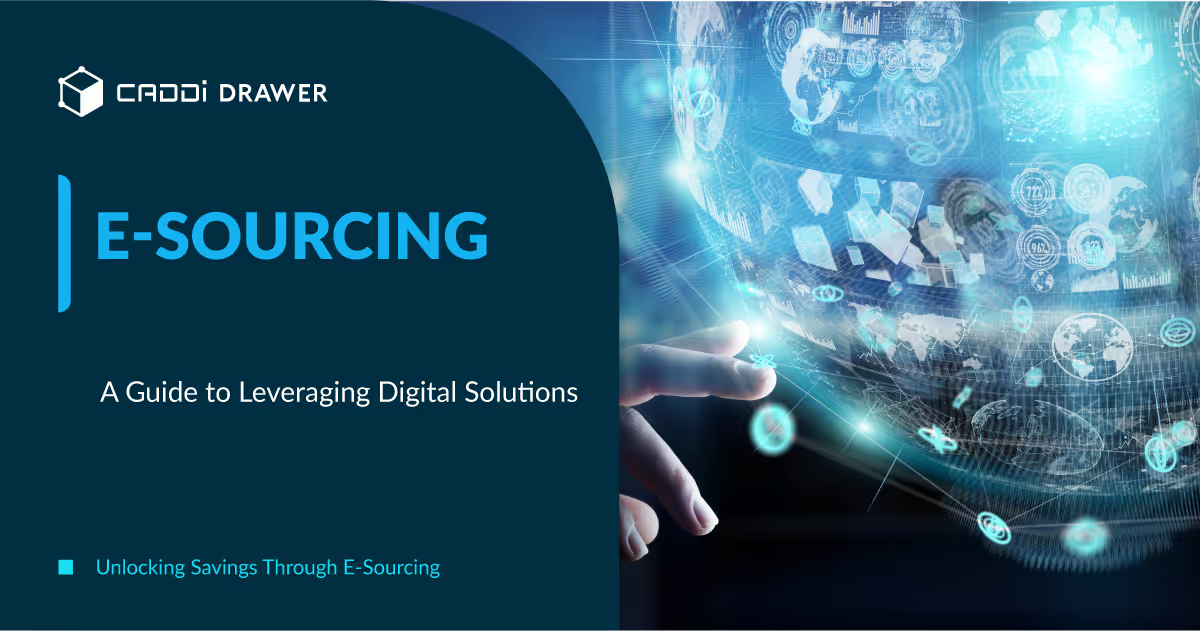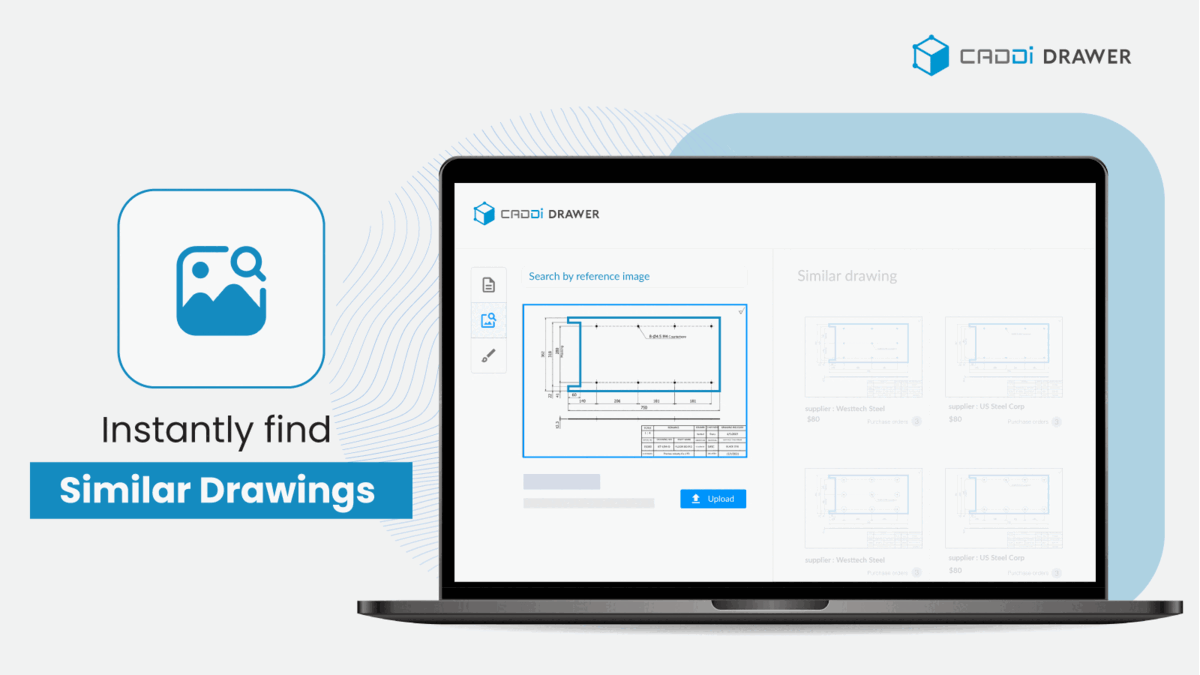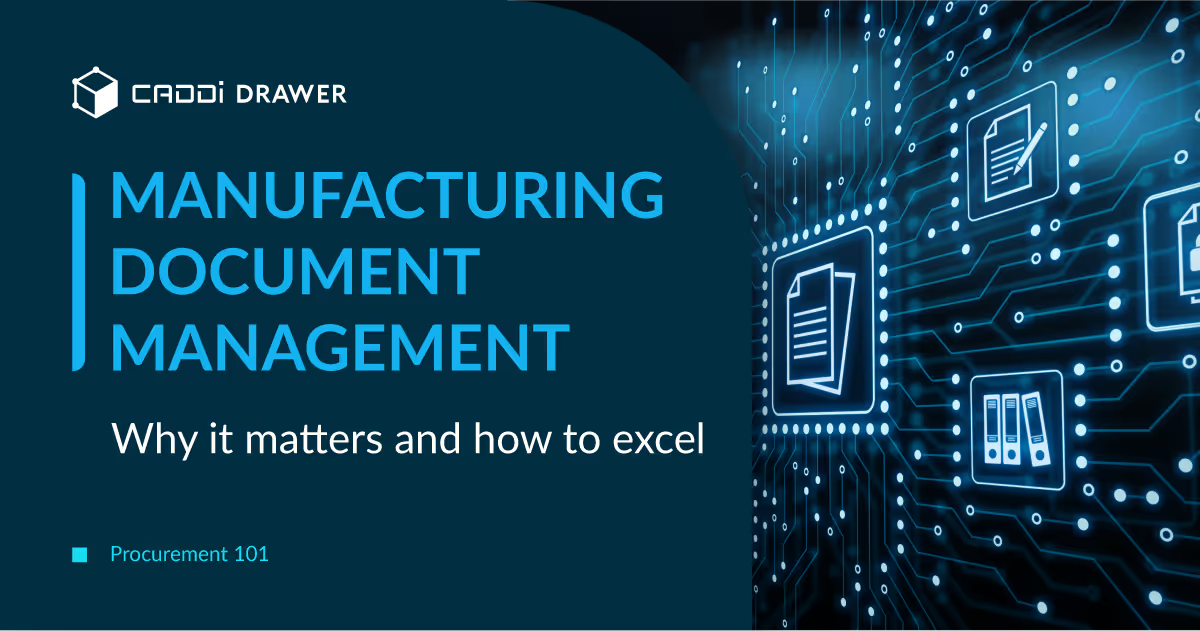Unlocking Savings Through E-Sourcing: A Guide to Leveraging Digital Solutions

Table of Contents

Introduction to e-Sourcing
e-Sourcing refers to the process of procuring goods and services through electronic methods such as online tendering and e-auctions. It is a key component of e-procurement and enables organizations to use the internet and technologies to identify new suppliers, negotiate and award contracts, purchase items and conduct reverse auctions.
The origins of e-sourcing can be traced back to the 1990s with the rise of e-commerce and development of technologies that allowed RFPs and tenders to be published and managed online. Some of the early e-sourcing platforms and providers emerged during this decade as the internet offered new ways for buyers and suppliers to connect and transact business electronically.
Today, e-sourcing often utilizes e-procurement software or specialized e-sourcing software for activities ranging from posting RFIs and RFQs online to advanced sourcing analytics. It provides automated and efficient online tendering as well as e-auction capabilities to ultimately generate savings in procurement costs. The e-sourcing process typically involves activities such as identifying requirements, evaluating and approving suppliers, issuing RFI/RFQs, facilitating bidding, supporting e-auctions, awarding contracts and enabling purchase orders.
Benefits of e-Sourcing
e-sourcing provides numerous benefits to organizations that implement it. Some of the key advantages include:
Cost Savings
- Reduces procurement costs through automated workflows, reverse auctions and global access to suppliers
- Lowers transaction costs by minimizing paperwork, phone calls and faxes
- Enables automated bid comparison to find lowest cost suppliers
- Reverse auctions drive competition between suppliers to reduce costs
Process Efficiency
- Streamlines and automates repetitive tasks like posting RFx, receiving quotes and generating reports
- Structured workflows ensure consistency and compliance with procurement policies
- Real-time tracking of bids, suppliers and contracts provides visibility
- Integrations with ERP systems avoid re-entering data
Global Access to Suppliers
- Widens supplier base beyond local networks to national and international sources
- Identifies new suppliers in low-cost countries to maximize savings
- Provides 24/7 visibility to communicate with global suppliers in different timezones
- Levels the playing field for small businesses to compete for contracts
e-Sourcing Process
The e-sourcing process involves several key steps:
- Sourcing team formation – Assemble a cross-functional sourcing team with representatives from procurement, finance, IT, legal, and key business units. Clearly define roles and responsibilities.
- Requirements gathering – Document business requirements, technical specifications, compliance needs, and any other supplier criteria. Prioritize must-have vs nice-to-have requirements.
- Supplier identification – Use market research, existing supplier databases, and RFIs to identify suppliers capable of meeting requirements. Expand the potential supplier base globally.
- Request for information (RFI) – Issue an RFI to qualified suppliers to gather general capability and solution information. Use responses to refine requirements.
- Request for quotation (RFQ) – Send the RFQ to qualified suppliers to obtain detailed pricing information for specific goods or services. Ensure the RFQ clearly outlines the required specifications, quantities, and delivery requirements to enable accurate quotations.
- Bid analysis and evaluation – Analyze supplier proposals based on established criteria. Clarify via Q&A. Evaluate proposals using a weighted scoring model.
- Supplier selection and award – Select the top-ranked supplier(s) through direct negotiation or e-auctioning. Notify awarded and non-awarded suppliers. Finalize contracts.
Following a structured e-sourcing process enables organizations to source strategically, drive supplier competition, and achieve significant cost reductions. The process is facilitated through e-sourcing software.
e-Sourcing Technology
e-sourcing platforms provide software tools and capabilities to streamline and optimize the sourcing process. Key features of e-sourcing software include:
- Sourcing automation – e-sourcing platforms provide end-to-end automation of sourcing events from RFP creation to bid analysis. This reduces manual tasks and speeds up the sourcing lifecycle.
- Supplier management – supplier databases, performance analytics, and collaboration tools allow buyers to easily manage relationships with suppliers globally.
- e-auctions – real-time bidding engines facilitate competitive bidding events for sourcing commoditized categories.
- Contract management – built-in contract authoring, templates, and e-signatures enable paperless contract management.
- Reporting and analytics – dashboards, KPI tracking, and data visualization provide insights into spending patterns, savings, and supplier performance.
- Integration capabilities – open APIs allow integration with procurement systems, ERPs, and catalogs for streamlined processes.
When implementing an e-sourcing platform, key considerations include:
- Identifying feature requirements based on current sourcing pain points.
- Comparing solutions across usability, flexibility, and total cost of ownership.
- Planning for user training and change management to drive adoption.
- Integrating with downstream systems like procure-to-pay software.
- Developing metrics and dashboards to track benefits realization.
- Ensuring data security when managing sensitive supplier information.
The right e-sourcing technology provides the digital tools for procurement teams to manage sourcing events efficiently at global scale.
Challenges of e-Sourcing
e-sourcing brings many benefits, but also has some challenges that organizations need to be aware of:
- Technology limitations – Implementing new e-sourcing software and systems can be complex. Legacy systems may not integrate well and there could be limitations in reporting capabilities.
- Change management – Moving to e-sourcing requires change management within the procurement department and also with suppliers. There is often resistance to adopting new processes and technologies. Proper training and communication is key.
- Cybersecurity risks – With procurement activities being conducted online, there are increased risks of hacking, data breaches and cyber attacks. Organizations need cybersecurity measures like access controls, encryption and cyber insurance.
To overcome these challenges, procurement teams should take an incremental approach to e-sourcing adoption. Starting with a pilot focused on a specific spend category allows lessons to be learned before scaling more broadly. Ongoing training and support can smoothen the transition. With the right strategies, e-sourcing challenges can be mitigated.
Best Practices
Successful e-sourcing depends on following certain best practices:
- Cross-functional team involvement – The e-sourcing team should include stakeholders from relevant departments such as procurement, finance, IT, legal, and end-users. This ensures alignment on objectives, requirements, and processes.
- Clear requirements and evaluation criteria – Well-defined specifications, requirements, and evaluation criteria help suppliers understand expectations and allow for an objective comparison of supplier responses. Quantitative factors like pricing should be weighted appropriately along with qualitative factors.
- Supplier relationship management – Existing supplier relationships and expertise should be leveraged. New suppliers need onboarding on the company’s e-sourcing processes and systems. Ongoing performance management and development of strategic partnerships is key.
- Data analysis – The e-sourcing process generates vast amounts of supplier and market data. This needs to be organized, analyzed and translated into actionable insights regarding pricing trends, supplier capabilities, supply risks, negotiation opportunities etc. Analytics tools and techniques help mine value from e-sourcing data.
Following these best practices improves the efficiency and effectiveness of e-sourcing initiatives, leading to significant savings and procurement process improvements. A strategic approach to e-sourcing centered around cross-functional collaboration, requirements analysis, supplier relationships and data analytics yields the best results.
Case Studies
Company X
Company X is an example of a business that has successfully implemented e-sourcing. By leveraging e-sourcing technology and best practices, Company X was able to reduce procurement costs by 20% in the first year.
Some key benefits Company X saw from e-sourcing:
- Increased competition – Online RFQ process opened up competitive bidding to a wider range of suppliers globally. This increased competition drove down costs.
- Process efficiency – Automated workflows and approvals through their e-sourcing platform reduced cycle times.
- Data analytics – With all their spend data in one place, Company X could analyze costs and identify additional saving opportunities.
Company Y
Another example is Company Y. They were struggling with a highly manual, paper-based sourcing process. By adopting e-sourcing, they achieved the following:
- Faster cycle times – RFQs and contracts could be completed in days rather than weeks.
- Secured governance – Built-in approval workflows ensured they followed procurement policies.
- Efficient supplier data management – The e-sourcing system became a central repository to manage supplier information and performance.
In summary, both Company X and Company Y realized significant benefits from implementing e-sourcing platforms. The increased efficiency, visibility, and control enabled them to reduce costs and better manage their procurement processes.
Unlocking Savings with CADDi Drawer
One key tool in the e-sourcing arsenal is CADDi Drawer. This cutting-edge e-sourcing platform offers:
- Advanced search capabilities: Quickly find similar drawings across vast historical archives using keywords, images, or sketches
- Similarity search function: Combined with cost information, empowers procurement teams to identify the best suppliers and negotiate prices effectively
- Supplier consolidation: Highlights opportunities to group similar drawings under a single supplier, increasing volume and bargaining power
- Value analysis and engineering features: Identifies cost-saving design alternatives

With CADDi Drawer, companies can:
- Unlock the full potential of e-sourcing
- Drive down costs
- Boost procurement performance
By leveraging the power of CADDi Drawer, organizations can take their e-sourcing efforts to the next level and achieve significant benefits in today’s competitive marketplace.
Introduction to e-Sourcing
e-Sourcing refers to the process of procuring goods and services through electronic methods such as online tendering and e-auctions. It is a key component of e-procurement and enables organizations to use the internet and technologies to identify new suppliers, negotiate and award contracts, purchase items and conduct reverse auctions.
The origins of e-sourcing can be traced back to the 1990s with the rise of e-commerce and development of technologies that allowed RFPs and tenders to be published and managed online. Some of the early e-sourcing platforms and providers emerged during this decade as the internet offered new ways for buyers and suppliers to connect and transact business electronically.
Today, e-sourcing often utilizes e-procurement software or specialized e-sourcing software for activities ranging from posting RFIs and RFQs online to advanced sourcing analytics. It provides automated and efficient online tendering as well as e-auction capabilities to ultimately generate savings in procurement costs. The e-sourcing process typically involves activities such as identifying requirements, evaluating and approving suppliers, issuing RFI/RFQs, facilitating bidding, supporting e-auctions, awarding contracts and enabling purchase orders.
Benefits of e-Sourcing
e-sourcing provides numerous benefits to organizations that implement it. Some of the key advantages include:
Cost Savings
- Reduces procurement costs through automated workflows, reverse auctions and global access to suppliers
- Lowers transaction costs by minimizing paperwork, phone calls and faxes
- Enables automated bid comparison to find lowest cost suppliers
- Reverse auctions drive competition between suppliers to reduce costs
Process Efficiency
- Streamlines and automates repetitive tasks like posting RFx, receiving quotes and generating reports
- Structured workflows ensure consistency and compliance with procurement policies
- Real-time tracking of bids, suppliers and contracts provides visibility
- Integrations with ERP systems avoid re-entering data
Global Access to Suppliers
- Widens supplier base beyond local networks to national and international sources
- Identifies new suppliers in low-cost countries to maximize savings
- Provides 24/7 visibility to communicate with global suppliers in different timezones
- Levels the playing field for small businesses to compete for contracts
e-Sourcing Process
The e-sourcing process involves several key steps:
- Sourcing team formation – Assemble a cross-functional sourcing team with representatives from procurement, finance, IT, legal, and key business units. Clearly define roles and responsibilities.
- Requirements gathering – Document business requirements, technical specifications, compliance needs, and any other supplier criteria. Prioritize must-have vs nice-to-have requirements.
- Supplier identification – Use market research, existing supplier databases, and RFIs to identify suppliers capable of meeting requirements. Expand the potential supplier base globally.
- Request for information (RFI) – Issue an RFI to qualified suppliers to gather general capability and solution information. Use responses to refine requirements.
- Request for quotation (RFQ) – Send the RFQ to qualified suppliers to obtain detailed pricing information for specific goods or services. Ensure the RFQ clearly outlines the required specifications, quantities, and delivery requirements to enable accurate quotations.
- Bid analysis and evaluation – Analyze supplier proposals based on established criteria. Clarify via Q&A. Evaluate proposals using a weighted scoring model.
- Supplier selection and award – Select the top-ranked supplier(s) through direct negotiation or e-auctioning. Notify awarded and non-awarded suppliers. Finalize contracts.
Following a structured e-sourcing process enables organizations to source strategically, drive supplier competition, and achieve significant cost reductions. The process is facilitated through e-sourcing software.
e-Sourcing Technology
e-sourcing platforms provide software tools and capabilities to streamline and optimize the sourcing process. Key features of e-sourcing software include:
- Sourcing automation – e-sourcing platforms provide end-to-end automation of sourcing events from RFP creation to bid analysis. This reduces manual tasks and speeds up the sourcing lifecycle.
- Supplier management – supplier databases, performance analytics, and collaboration tools allow buyers to easily manage relationships with suppliers globally.
- e-auctions – real-time bidding engines facilitate competitive bidding events for sourcing commoditized categories.
- Contract management – built-in contract authoring, templates, and e-signatures enable paperless contract management.
- Reporting and analytics – dashboards, KPI tracking, and data visualization provide insights into spending patterns, savings, and supplier performance.
- Integration capabilities – open APIs allow integration with procurement systems, ERPs, and catalogs for streamlined processes.
When implementing an e-sourcing platform, key considerations include:
- Identifying feature requirements based on current sourcing pain points.
- Comparing solutions across usability, flexibility, and total cost of ownership.
- Planning for user training and change management to drive adoption.
- Integrating with downstream systems like procure-to-pay software.
- Developing metrics and dashboards to track benefits realization.
- Ensuring data security when managing sensitive supplier information.
The right e-sourcing technology provides the digital tools for procurement teams to manage sourcing events efficiently at global scale.
Challenges of e-Sourcing
e-sourcing brings many benefits, but also has some challenges that organizations need to be aware of:
- Technology limitations – Implementing new e-sourcing software and systems can be complex. Legacy systems may not integrate well and there could be limitations in reporting capabilities.
- Change management – Moving to e-sourcing requires change management within the procurement department and also with suppliers. There is often resistance to adopting new processes and technologies. Proper training and communication is key.
- Cybersecurity risks – With procurement activities being conducted online, there are increased risks of hacking, data breaches and cyber attacks. Organizations need cybersecurity measures like access controls, encryption and cyber insurance.
To overcome these challenges, procurement teams should take an incremental approach to e-sourcing adoption. Starting with a pilot focused on a specific spend category allows lessons to be learned before scaling more broadly. Ongoing training and support can smoothen the transition. With the right strategies, e-sourcing challenges can be mitigated.
Best Practices
Successful e-sourcing depends on following certain best practices:
- Cross-functional team involvement – The e-sourcing team should include stakeholders from relevant departments such as procurement, finance, IT, legal, and end-users. This ensures alignment on objectives, requirements, and processes.
- Clear requirements and evaluation criteria – Well-defined specifications, requirements, and evaluation criteria help suppliers understand expectations and allow for an objective comparison of supplier responses. Quantitative factors like pricing should be weighted appropriately along with qualitative factors.
- Supplier relationship management – Existing supplier relationships and expertise should be leveraged. New suppliers need onboarding on the company’s e-sourcing processes and systems. Ongoing performance management and development of strategic partnerships is key.
- Data analysis – The e-sourcing process generates vast amounts of supplier and market data. This needs to be organized, analyzed and translated into actionable insights regarding pricing trends, supplier capabilities, supply risks, negotiation opportunities etc. Analytics tools and techniques help mine value from e-sourcing data.
Following these best practices improves the efficiency and effectiveness of e-sourcing initiatives, leading to significant savings and procurement process improvements. A strategic approach to e-sourcing centered around cross-functional collaboration, requirements analysis, supplier relationships and data analytics yields the best results.
Case Studies
Company X
Company X is an example of a business that has successfully implemented e-sourcing. By leveraging e-sourcing technology and best practices, Company X was able to reduce procurement costs by 20% in the first year.
Some key benefits Company X saw from e-sourcing:
- Increased competition – Online RFQ process opened up competitive bidding to a wider range of suppliers globally. This increased competition drove down costs.
- Process efficiency – Automated workflows and approvals through their e-sourcing platform reduced cycle times.
- Data analytics – With all their spend data in one place, Company X could analyze costs and identify additional saving opportunities.
Company Y
Another example is Company Y. They were struggling with a highly manual, paper-based sourcing process. By adopting e-sourcing, they achieved the following:
- Faster cycle times – RFQs and contracts could be completed in days rather than weeks.
- Secured governance – Built-in approval workflows ensured they followed procurement policies.
- Efficient supplier data management – The e-sourcing system became a central repository to manage supplier information and performance.
In summary, both Company X and Company Y realized significant benefits from implementing e-sourcing platforms. The increased efficiency, visibility, and control enabled them to reduce costs and better manage their procurement processes.
Unlocking Savings with CADDi Drawer
One key tool in the e-sourcing arsenal is CADDi Drawer. This cutting-edge e-sourcing platform offers:
- Advanced search capabilities: Quickly find similar drawings across vast historical archives using keywords, images, or sketches
- Similarity search function: Combined with cost information, empowers procurement teams to identify the best suppliers and negotiate prices effectively
- Supplier consolidation: Highlights opportunities to group similar drawings under a single supplier, increasing volume and bargaining power
- Value analysis and engineering features: Identifies cost-saving design alternatives

With CADDi Drawer, companies can:
- Unlock the full potential of e-sourcing
- Drive down costs
- Boost procurement performance
By leveraging the power of CADDi Drawer, organizations can take their e-sourcing efforts to the next level and achieve significant benefits in today’s competitive marketplace.
Ready to see CADDi Drawer in action? Get a personalized demo.
Subscribe to our Blog!
Related Resources












.svg)



.svg)
.svg)
.svg)


